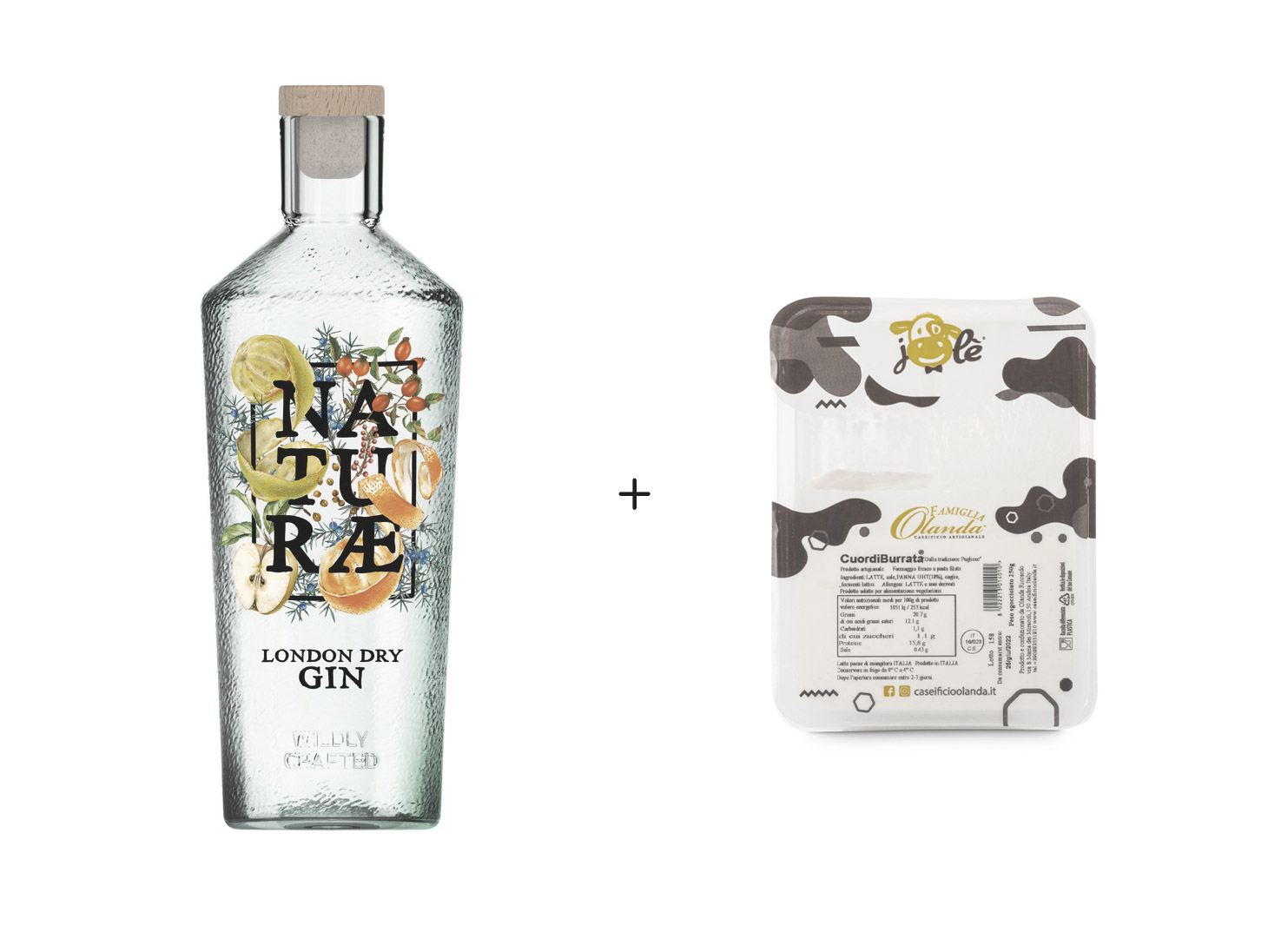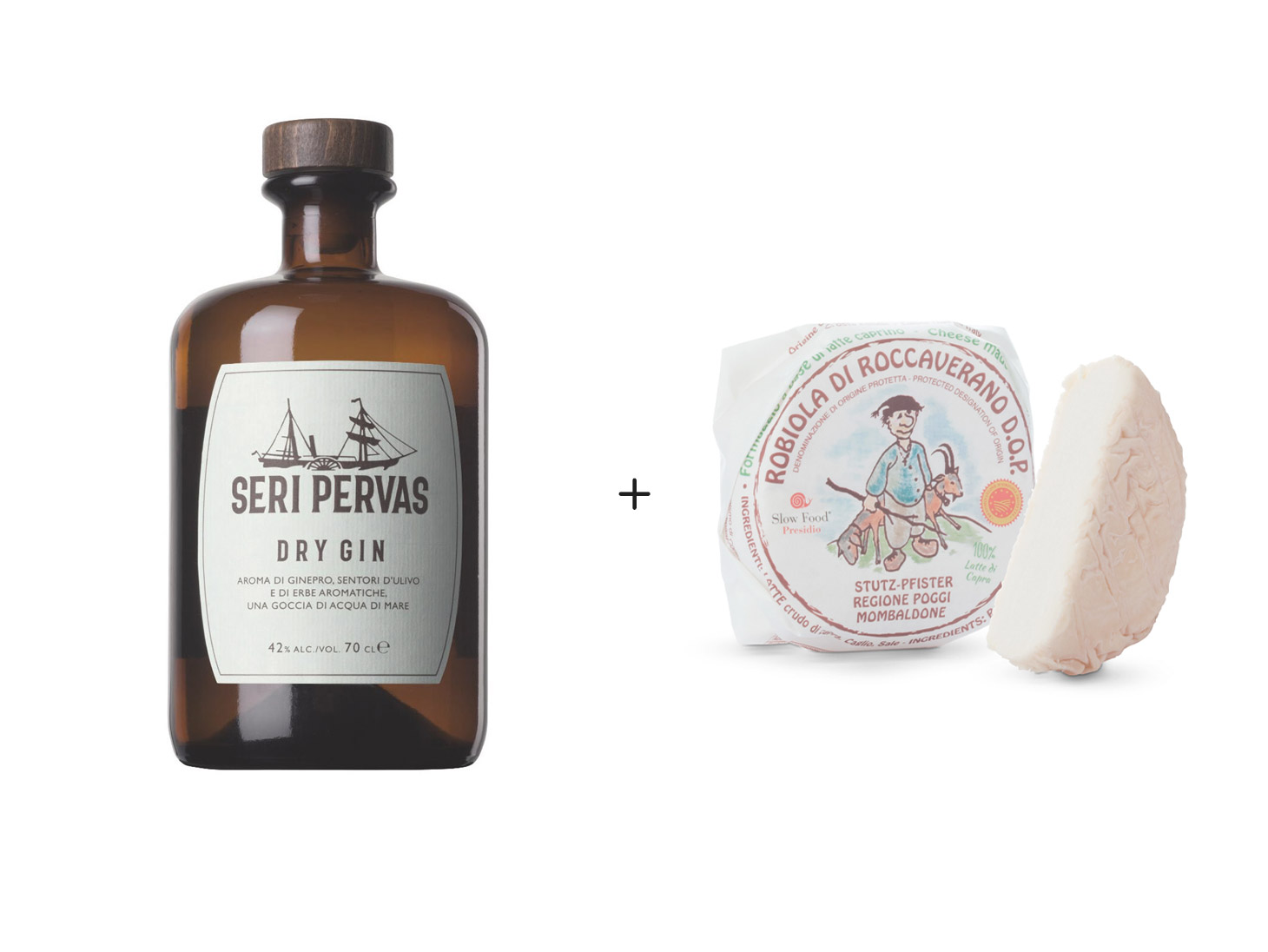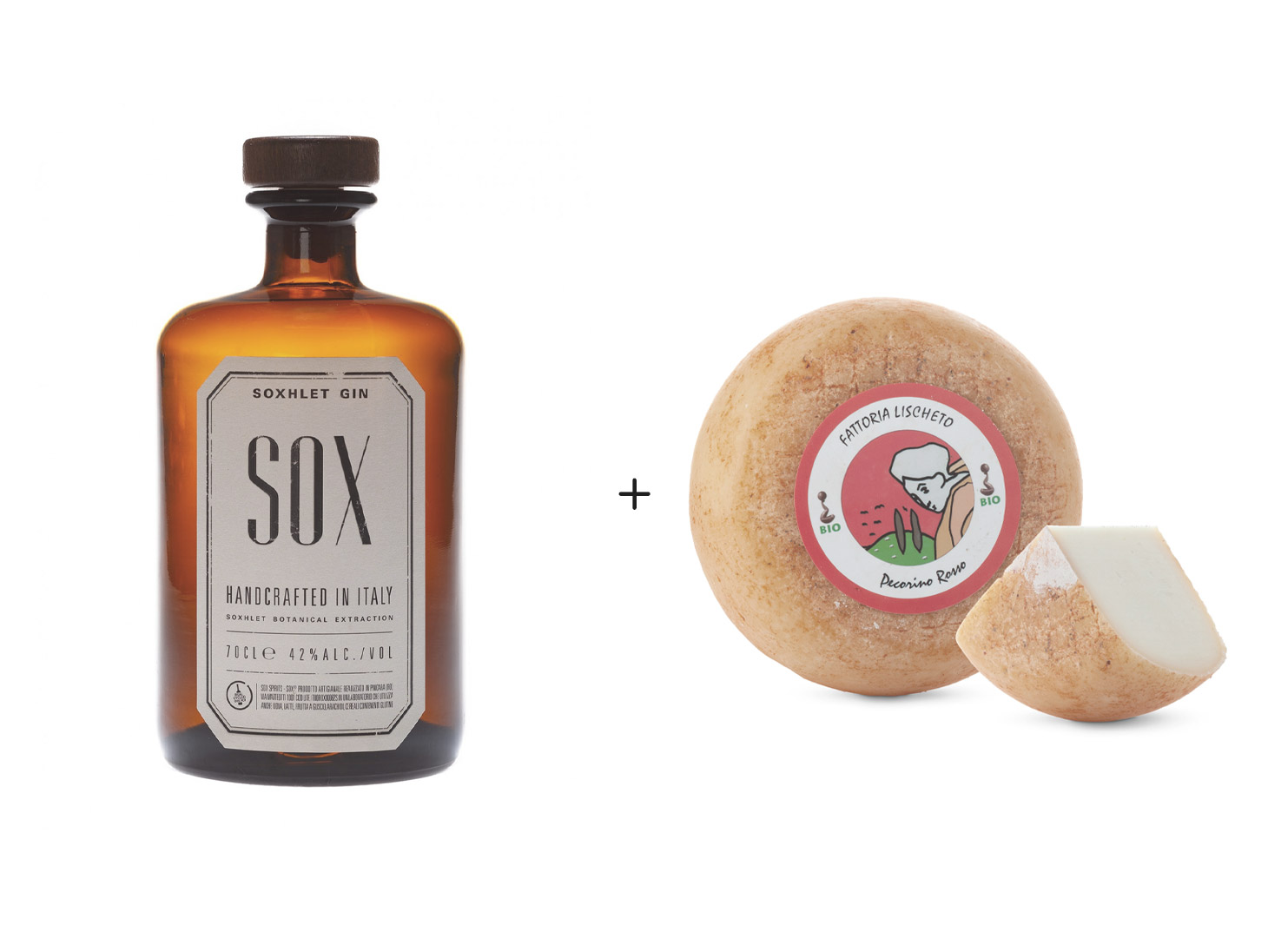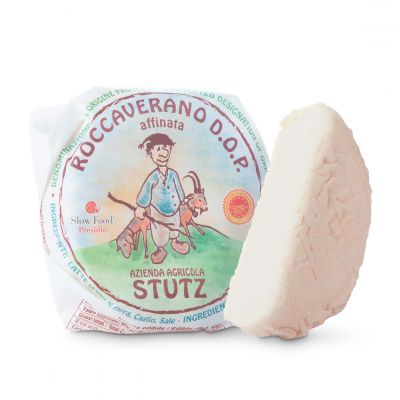Riding the trend of gin, here are three combinations with cheeses designed for an aperitifs, with mixed gin in the Gin&Tonic version
⏱ 2 MINUTES READING
HISTORY AND FASHION
Gin is one of the coolest alcoholic beverages of the moment: a trend that has grown a lot since the late 1980s after a period of low glory due to the preferences accorded to vodka.
But the history of gin goes well beyond the Eighties: born in Holland in the seventeenth century as a medical remedy, it arrives in England where, highly appreciated, it finds fertile ground to give life to new productions.
After many historical facts that have led to ups and downs in its consumption and production, it regains its glory in the 1900s.
WHAT IS IT?
Gin is an alcoholic drink produced by the redistillation of neutral ethyl alcohol obtained from cereals, flavoured with juniper berries and enriched with other “botanicals”, such as coriander, citrus fruits, licorice and many others.
The world of gin is divided into 6 main styles: London Dry, Distilled, Jenever, Plymouth, Old Tom, Bathub Cold Compound. We have decided to focus on the first two because they are the less niche and the more suitable for pairing, the objective of this article.
To clarify, the London Dry style refers to a method that involves the redistillation of alcohol with botanicals, without the possibility of adding other ingredients after redistillation than sugar, but in very small quantities. This is the dry gin par excellence.
The Distilled style, on the other hand, allows the addition of other ingredients after the redistillation, including sweeteners or other flavouring or colouring substances.
ALONE OR WITH TONIC WATER?
There are meditation gin that can be sipped in pureness. The alternative is mixing with other liquids, one above all the tonic water, thus creating the iconic Gin&Tonic.
It is possible to play a little with tonics: in general a neutral tonic water will be able to give the right role to gin, but for particularly clean gins it is also possible to dare with flavoured tonics, making sure to choose flavours in line with the botanicals present in the gin!
Finally, in Gin&Tonic the proportions are very important: 4,5 cl of gin and 150 cl of tonic water. If this balance is respected, you’ll be obtained a cocktail that will not exceed 8 alcohol degrees approximately, therefore also ideal for an aperitif. And this is where the idea of cheese pairing comes from.
TASTING
Here are some tips for dealing with gin tasting; in fact, even if mixed with the tonic water, it can often be useful to first taste a drop of gin in pureness to better identify its nuances.
Being a very alcoholic drink (about 40% Vol) it should be kept not too close to the nose, or brought a little closer from the side.
When tasting, holding the gin on the tongue for about ten seconds to check that you do not develop the reaction of wanting to spit out the liquid and at the same time grasp its aromatic notes. Finally, pass a drop of gin with your tongue on the upper part of the gum: the development of heat due to alcohol, if it is not annoying, reveals the good quality of the gin.
CHEESE PAIRINGS
When pairing, the taste and texture of the cheeses must be taken into account in order to find the right balance with the style of the gin and the aromatic notes deriving from botanicals. In our pairings, we have always used neutral tonic waters so as not to steal the show from the two protagonists.
Furthermore we kept as lighthouse the search for the harmony and the ability to leave the palate clean as to suggest a new taste.
Finally, curiosity and desire to experiment!
GIN AND CHEESE PAIRINGS
Name: Naturæ London Dry Gin
Region: Lombardy
Style: London Dry
Alcohol: 43% Vol.
Botanicals: Juniper, orange, bergamot, apple, dog rose, coriander seeds, cubeb pepper
Features: Dry, fresh, able to enhance the fruity and aromatic notes of botanicals
Suggestions: It gives its best wit a plain tonic water that leaves a leading role to the botanicals
Our pairings: Cuor di Burrata 'Stracciatella', the slightly fruity note of the gin goeas very well with the notes of cream and milk from the stracciatella, creating a beautiful harmony that keaves the mouth clean
Name: Seri Pervas Dry Gin
Region: Friuli Venezia Giulia
Style: Distilled
Alcohol: 42% Vol.
Botanicals: Juniper, olive leaves, rosemary, sea water
Features: Very dry, notes of Mediterranean plants stand out, with a balsamic and salty hint
Suggestions: Versatile, excellent with neutral tonic water for those who do not like frills but also to experiment with particular tonic waters
Our pairings: Robiola di Roccaverano Dop Affinata, the good persistence and creamy texture of the robiola require the support of a dry gin that lightens the palate and prepares it for the next tasting
Name: Sox Soxhlet Gin
Region: Veneto
Style: Distilled (metodo Soxhlet)
Alcohol: 42% Vol.
Botanicals: Juniper, Bourbon vanilla, tonka bean
Features: Elegant, with sweet notes in the beginning that leave room for more spicy notes in the finish
Suggestions: A meditation gin if tasted alone; if mixed it is delicious with a dry tonic water that enhances its elegance
Our pairings: Pecorino Rosso Bio, the gin in purity, with its vanilla scents, perfectly accompanies this pecorino with a sweet and very clean flavour, a successful marriage!
Giulia Bassetto
Marketing and Communication





